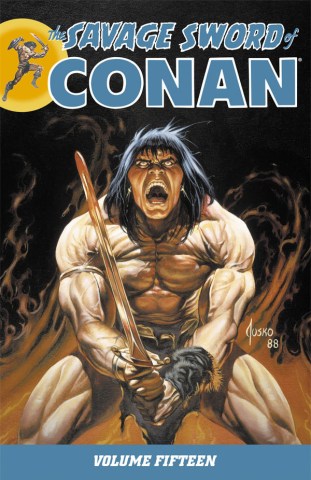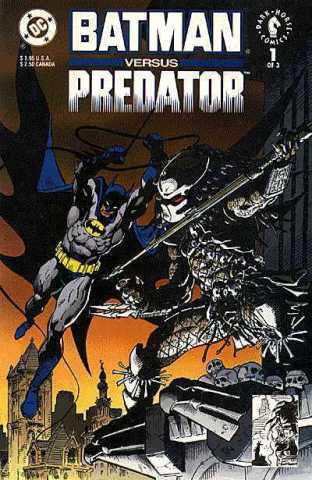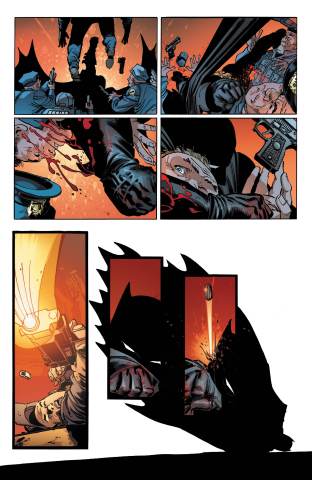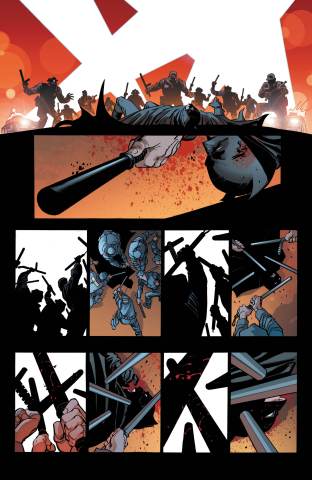Interview: Artist Andy Kubert Strikes Again in Dark Knight III
Artiste Extraordinaire Andy Kubert shares stories about learning to draw and always loving the Bat.
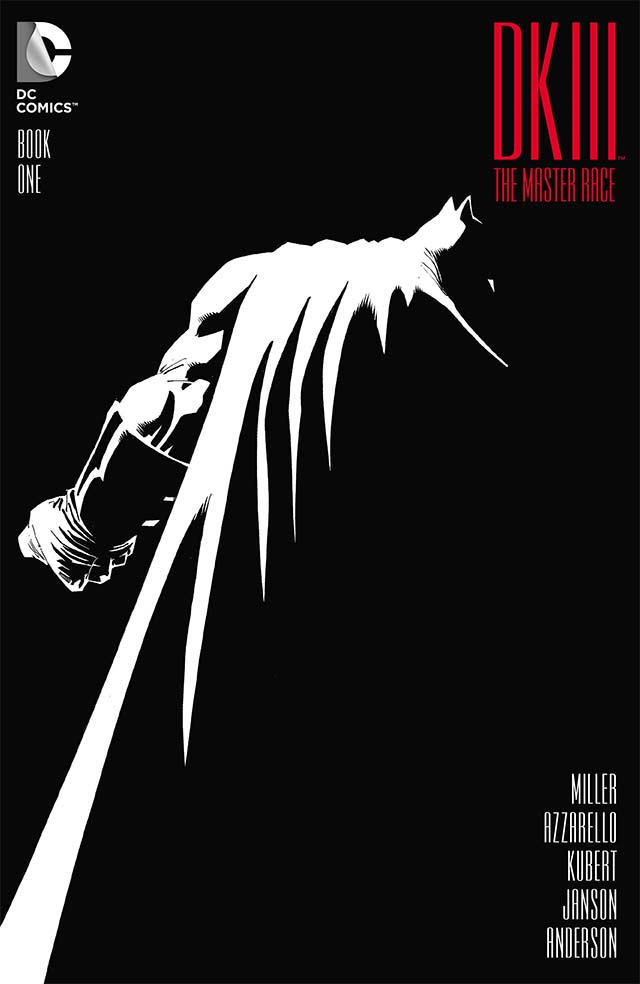
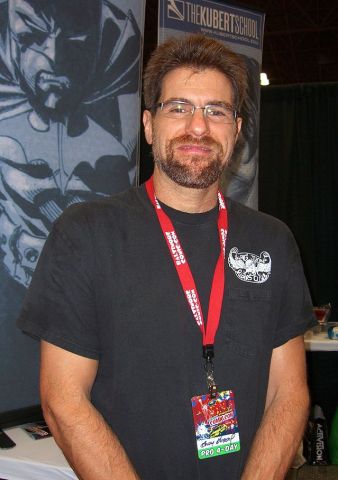 Andy Kubert started out at the bottom of his class at his father’s school, but his legions of fans would never believe that. From X-Men to Batman, Andy’s carved out his place in the comics hall of fame, but if there were a dictionary of comics, the definition of “Kubert” would be “Legacy.”
Andy Kubert started out at the bottom of his class at his father’s school, but his legions of fans would never believe that. From X-Men to Batman, Andy’s carved out his place in the comics hall of fame, but if there were a dictionary of comics, the definition of “Kubert” would be “Legacy.”
Growing up as the son of the great Joe Kubert has given Andy an overwhelming modesty about his own work, and both a healthy competition and partnership with his brother, Adam Kubert. Another lifetime ago, I had the honor of interviewing Joe Kubert about the earlier years of comics and how he helped build the industry. During that call, I had the vicarious fangirl thrill of overhearing Andy stop by and say goodnight to his father. Now, many years later, Andy’s sitting in that same office, sharing insights about his family, the craft he’s learned and still perfecting, and his powerfully enduring love for Batman.
It’s not too often Andy gives interviews or makes appearances at conventions, so it’s especially terrific that he made the time to talk with the Mary Sue. As with all great characters and legacies in comics, the story continues.
Rachel Gluckstern (The Mary Sue): Tell us a bit about your childhood, your background.
Andy Kubert: I know it was a long time ago, my childhood [laughs]. I grew up in Dover, New Jersey. My father had built a house up on Prospect Street. He’d built it in 1962, the year I was born. We had five kids in the house. I had three brothers and a sister. I’m the youngest, and Adam’s the second-youngest. The house had a very steep driveway, which was a lot of fun in the snow. It was pretty much a normal childhood except my father was always home. All my friends’ fathers and some of their mothers—at that time, most of the mothers were stay-at-home—would come home in the evening. But my dad was almost always home unless he was going into New York. During the day, he would actually try to spend time with us. At night, he’d be up in the studio working.
TMS: Did your mom work outside the house? Was she also home?
AK: Yeah, my mom was home. My mom didn’t start working until they started up the school. They probably started putting things together for the school in the ’70s. It opened late in ’76, so probably, they started putting things together a couple years prior.
TMS: Were you an artist as a kid at all?
AK: No. Whenever I took art classes in school—grammar school, middle school—I was always OK in art classes, but I didn’t really start drawing then. I took a commercial art class when I was in high school my senior year. I went to Morris County Vo-Tech, which is in Denville, New Jersey. You would go to a regular high school half of the day, and the other half, for three hours, you would go to a vocational school. I took a commercial art class there, which was basically rendering from photographs and different technologies, and things like that. But that was as far as my art training then went.
We pretty much took comics for granted, since my father was an artist and editor at DC, and he used to bring home comics all the time, and we had them pretty much in every room in the house. You know, they were in the bathroom, they were everywhere. We never really went to comics stores, newsstands, or anything like that.
Growing up, I just followed what I was attracted to and what I could easily read. I loved all the war books. I loved all my father’s stuff. The storytelling was clear, and I liked the stories. The Batman stuff, I used to pick up because Neal Adams was drawing it. Swamp Thing started coming out, and I picked that up because I liked the art in it. Bernie Wrightson was drawing that. I really enjoyed it. Curt Swan was doing Superman. I really liked that too. Sugar and Spike, I liked that!
TMS: The really personal, distinguishable books you liked, that added a little extra to them?
AK: Neal Adams’s run on Batman, the Unknown Soldier stuff, the Losers, the Haunted Tank, and the Superman books, especially when Curt Swan was drawing it. Those were the ones I pretty much stuck with. The other ones, not so much. Oh, and the horror books. House of Mystery, and those kind of things. I liked them a lot too.
TMS: Did you have any interest in drawing as a kid?
AK: Not at all, no [laughs]. My interests were bike-riding, playing basketball, the kind of stuff.
TMS: So what did you want to do when you to grow up and everything?
AK: I always wanted to be a policeman. That might have been the way I went if I didn’t get into being a cartoonist. I probably would’ve ventured into that direction.
TMS: When did you start drawing?
AK: After high school, I made a decision to go to Rochester Institute of Technology College, up in Rochester, New York. Adam was already going to school up there, and out of four or five schools that I applied to, I think I got accepted to two of them? I went for packaging design, which was basically designing boxes for products. I enjoyed the school, and I had a good time up there, but the course was not for me. And after about six months, I dropped out. Right before I dropped out, I talked to my father about it. I called him on the phone, and he said to me, “Well, come on back here. And if you want, you can start going into our school.” The idea was that I would through the school for about a year, learn what the school’s about, how it works, that kind of thing, and then I would work in the administration with my mother, who at that time ran the school. Since I had nothing else going on, I said, “Sure, that sounds great.” Because I knew Rochester wasn’t for me. What we were doing up there, it just wasn’t for me. Adam graduated from there. He’s got a four-year degree in medical illustration from them.
So I went through school for that year, and I was probably the worst artist in the whole class. Even one of the teachers who’s still here, Hy Eisman, he said to me recently, “Andy, when you came to this school, I was wondering what the hell you were doing here. You were so bad!” [Laughs]. I said, “I guess it worked out. I’m glad I stuck with it!” What happened was it got so infectious with all the other students around. They were so into comics and so into the art that I really got into it, big time. I just immersed myself in everything. I immersed myself in the storytelling, and the figure-drawing, and just trying to figure stuff out.
TMS: So it was really your peers who got you excited, more than your dad?
AK: When I looked at my father’s drawing stuff, I was so far removed from what he could do that I didn’t even think about it. Because he was at such a level that I was like, “I can never do that.” I still look at his work that way. But the peers, I guess, yeah, they might have been a little more influential.
Once Adam graduated from Rochester, he also decided to go to my father’s school. And always, there’s a competition there. Adam could always draw. Adam took art classes all through school, and he lettered comics starting when he was twelve years old, so he was always into it, and he had a good basic knowledge of drawing. But I’ve got the heavy-duty competition factor inside of me. So that also helped out as far as me wanting to further myself and get better.
TMS: Who were you in school with besides Adam?
AK: Who was in my class? Eric Shanower, Ron Wagner, Jimmy Balent. Fred Fassberger—this guy was phenomenal. He never ended up wanting to do comics, but he was a tremendous, tremendous artist. Jay Geldoff, I know he did some comics. Bjorn Ousland.
TMS: Those are some really great peers there. I can see why you got excited. So you got really competitive and immersed, and it seemed to unlock something in you, I guess?
AK: I guess. Plus, also school. I had been taught by my father for three years. Towards the end, he only taught the third-year students, but I had him for first year, second year, third year. Plus, I had access to him at the house. And my father was probably one of the most patient guys and would spend so much time with you, and not rush you, and give you so much encouragement, that helped me out tremendously too. Even though I was god-awful when I first started.
TMS: Well, he was right.
AK: Yeah, he was right [laughs]. He was.
TMS: So when did you finally start working professionally?
AK: Well, actually, my father taught me how to letter comics while I was in school. I was able to pick up a few odd jobs at Marvel, a
couple little of jobs at DC, by showing editors my lettering samples. That was at a time when you could pretty much just walk in and walk into an office and say, “Here I am, can you look at my stuff?” without having to go through all the security stuff and appointments. So I actually got to know a lot of the editors at DC while I was going to school, and it was Archie Goodwin who helped me out a lot at Marvel, and Larry Hama. I was showing my school portfolio to Archie Goodwin because I was lettering an Epic comics called Time Spirits that Tom Yeates was drawing. And Archie was very nice and goes, “Come with me, Andy.” He brought me over down to Larry Hama’s office, and he said, “This is Andy Kubert.” Of course, that name got my foot in the door. So, Larry looked up, and [Archie] said, “Andy would like to show you his portfolio.” Larry gave me a couple of pin-ups that were going in the back of the black-and-white Savage Sword of Conan he was editing. And that was basically the start of it.
From there, Larry gave me a couple more pin-ups, like five pin-ups in a row. He said, “Work on the layouts, bring in the layouts, I’ll go over them with you.” And that was a great learning experience for me, because Larry would sit down with me, put tracing paper over it, show me where I was wrong, show me how to fine-tune things, composition and all that. Larry was awesome and had a big hand in getting me into the comics business. From there, I did a few back-up stories in the Conan books, and eventually, I think I drew one or two issues of Savage Sword.
TMS: Was that pencils and inks?
AK: The Savage Sword, yes, it was. I penciled and inked that stuff. Prior to that though, Sgt. Rock at DC was coming out every two months. I guess it was right on the verge of cancellation. Murray Boltinoff had taken over editing the title, and I showed him my portfolio. I was really into all the war stuff, and I was really influenced style-wise by
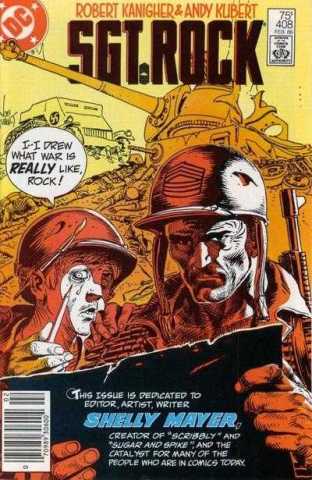
In an interesting coincidence, Sheldon Mayer was the artist for SUGAR AND SPIKE, one of the few titles to catch a younger Andy’s eye. Cover by Joe Kubert. (DC Comics)
my father, so, you know, I then got to be the regular artist on Sgt. Rock for about a year. But I also got stuff with Larry, and stuff with Marvel and Conan at the same time.
TMS: So, because you weren’t necessarily a hard comics fan, was there a book you really wanted to work on back then, or did you just want work?
AK: I wanted Batman big time [laughs]. I always wanted Batman! That was the end-all, be-all for me was Batman.
TMS: And yet, you ended up really making for your mark with X-Men?
AK: Yep, in the beginning, I did. It took me a while before I was able to get on a Batman book. I’m trying to remember how it went. From doing the Conan stuff, then I got on Doc Savage. I did the Doc Savage series with my brother. Mike Carlin offered it to Adam first, and Adam turned it down because he didn’t think he could get it done. I said to Adam, “Let’s both do it together! We’ll get it done.” He said okay, so we both ended up doing it. We worked with Denny O’Neil on it. And then on from there, Mike [Carlin] offered me Adam Strange. And then I think after that, it was Batman Versus Predator.
Batman Versus Predator was a HUGE book for me. That was one I got because apparently, Mike Mignola had turned it down because it was on such a tight schedule. So, for some reason, they called me up to see if I was interested in doing it. I said yeah. And then they told me the deadlines, and I said, “No wonder Mike turned this down.” It was really, really tight, but I could not turn that down. Adam was part of that one too.
TMS: That was coordinating with both DC and Dark Horse, right?
AK: Yes. For me, I was working mostly with Diana Schutz at Dark Horse. She was great. I had to draw those three issues in three months. Each issue was 36 pages, because they were Prestige format.
TMS: 36 pages a month? Oh my god!
AK: Yeah, I melted on that one. But I was really glad I did it. It sold phenomenally well. It was one of the big-time selling things for DC at that time. And then from there, I went to Marvel and did some Ghost Rider stuff for Bobbie Chase. At that time, all those guys were starting to form Image Comics, and they announced they were going to go form their own company. Then Bob Harras asked me if I wanted to take over X-Men because Jim [Lee] was leaving. I said, “Sure! Absolutely!” and that’s when I got onto X-Men.
TMS: Did you ever feel the urge to follow the Image guys?
AK: Not really. I appreciated what they did. I was happy for them. They were big successes. When I see someone who has a big success like that, I never look at it with jealousy. I always look at it like that’s something I could eventually strive for. They’re actually paving the way. And it’s a hard road to pave. They were on top-selling books, they were making good money, and to all of a sudden leave that and form their own thing, that was a gutsy move. But I was just very happy to be on X-Men at that time. I never really wanted to or looked forward to joining them or going off on my own. I was good, and I was happy where I was.
TMS: How about now? Do you ever think about creator-owned stuff?
AK: Sure, I do. But honestly, I will tell you that right now, I am so happy doing what I’m doing, and life is too short not to be happy doing what you’re doing, so I’m in the best spot for me.
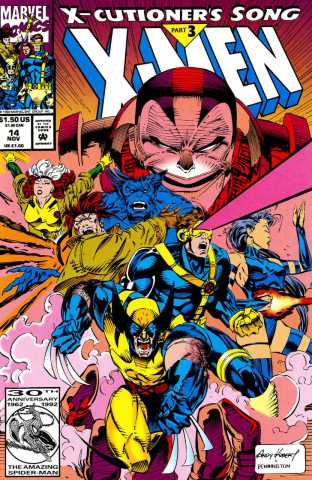
If you’re of a certain age, you’re hearing one of the greatest cartoon theme songs of all time right now. Of ALL TIME! (Marvel Comics)
TMS: Well, you are getting to do Batman, and it’s a very special Batman! But more on that later. How long were you on X-Men?
AK: Six years?
TMS: Wow, why does it feel like longer [both laugh]? Your X-Men really defined the X-Men for that era. Once Jim left, I’m sure there was some trepidation, and then you came along, and people seemed to cope just fine.
AK: I gotta tell you, I owe it all to Bob Harras. It was a gutsy move for him to put me on it. The X-Men books were THE franchise, and you have to keep up sales, and all that kind of stuff. And for Bob to put that trust and faith into me – I don’t know what he was thinking at the time [laughs]. But you know, I’m glad he thought that way!
TMS: Bob’s got a good eye! So why don’t you talk a bit about your work process? What really gets you in your drawing groove? What’s something aspiring artists could take a hint from you?
AK: You have to pace yourself. I figured this out pretty much when I got out of school. I’m not one of these guys who can stay up all night for three nights straight and work. I have to be well-rested, I have to have my mind fresh and clear, or else I’m not going to produce the best stuff I can. And if I don’t produce the best stuff I can, I get really pissed off and frustrated at it, and I get really depressed. This drawing and storytelling is so part of me that if I put something down, and I see that it’s not really hitting the mark, it grates on me. I’m very competitive with myself that way.
I get up around 5:30-6 o’clock in the morning, and probably I’ll start on my rough layouts around 7:30, you know, after I have one or two cups of coffee, read some stuff, whatever. I do full-size layouts, 11×17 layouts, up until about 11-11:30. Sometimes, I’ll get one page done, sometimes, I’ll get four pages done. It all depends on what’s on it, how stuck I get, or how much figuring out I have to do. For me, this stage is the hard part, figuring out how to break down the page. I really have to concentrate and think hard about where everything goes. At 12, I take a lunch. I’m out of the door, I have to get out. When I come back, then I start tightening up those roughs again. What I do is put them on a light box, and I’ll put two-ply Bristol over those roughs, and I’ll light-box through it. I call it a tight, linear breakdown. There’s no blacks, no rendering, no nothing, it’s all just outline stuff. I’ll probably get about four or five pages done like that first. Not that day, but over the course of a couple of days with all these steps. But then, when I put in the rendering and the blacks, to me, that’s when I can turn on the radio and feel a bit more easy. That I can do more towards the later part of the day, and after dinner, up ‘til like nine or ten where I can’t see anymore [laughs]. And then it’s bedtime.
TMS: Is that the process you learned at school? Is that the way your dad would work?
AK: No, my father always thought I was strange for working like that. Because I’m on the clock. I’m like clockwork the way I go. Adam was different. I don’t know how Adam is now, but in school, Adam was one of those guys who’d stay up late, pull all-nighters and my father was the same way. I couldn’t do my best work at that time. Those guys could. It didn’t bother them. But me – everybody’s different. I had to pace myself out. I still do.
TMS: Would they do the same process of the layouts, and then the roughs, and then the linear breakdowns, and then the rendering?
AK: I’m in my father’s office right now, actually! In the school, we left his office the same exact way as when he left. So I’m actually looking at a page of his roughs right now. He would do pretty tight – and this is about 3×4, 3×5 – thumbnails. He’d write down the dialogue or what what’s going on in the panels, and he’d do these little drawings, and they’re pretty tight. He could tell what’s going on with it. From there, he wouldn’t blow them up or light-box them, he’d redraw them on the 11×17 boards. My dad inked his own work, so his pencils were pretty loose, and he’d do all the tightening up in the inks.
TMS: The two of you have very different styles of inks.
AK: I only ever inked him once, on an issue of Sgt. Rock, way, way back when. It was the Kubert triple threat,
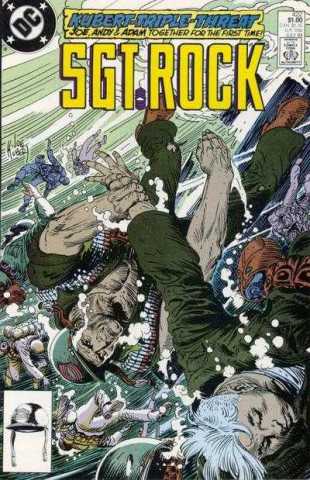
He meant the Kubert Triple Threat completely literally, by the way. It says so on the cover. (DC Comics)
if you remember. Adam colored it, and I think he lettered it. My dad penciled it, and I inked it. And I think I slaughtered him [laughs]! I was realizing it when I go, “Hey, how’d you like it?” He goes, “Ah…ohhhhhh…pretty good,” which means he was being kind, and I killed it. And by killed it, I mean not in a good way. But my father inked me on a bunch of projects, which was pretty much the highlight for me. He inked me on an issue of Punisher: War Journal, he inked me on Ghost Rider: Rise of the Midnight Sun stuff. He would help out on things here and there just to help us make deadlines, you know, like an issue of Captain America, inking that. I think he helped Adam out on an issue of Hulk, inking that. At DC, he inked me on the Before Watchmen stuff.
TMS: He inked that Flash [The Fastest Man Alive] cover.
AK: Yeah, that first Flash cover. I remember I gave him that cover before I went out to lunch. I came back 45 minutes later, and it was all done. I said, “You inked that in 45 minutes?” He said, “Twenty minutes.” I said, “You inked that in TWENTY minutes?” He said, “That was it.” [Laughs]. Twenty minutes to ink that cover, and it was gorgeous!
TMS: It really was. It’s like DC’s go-to Flash image.
AK: Yeah, it was nice. And DC, for this past San Diego convention, used it for their T-shirts, for Flash’s 75th anniversary.
TMS: Wait, you actually went to San Diego?
AK: I did not go to San Diego, but that T-shirt made it there [both laugh].
TMS: So what’s a bit of advice you’d want to give somebody? Something that maybe has arisen out of contemporary comics storytelling that kind of bugs you?
AK: Honestly, I think there are some basic things from storytelling that are missing. I don’t think people do enough establishing shots. Big establishing shots, like a full-page splash of New York City or the Savage Land, or something like that. When you do a pulled-back shot, it gets the reader involved, and you get them engrossed in the whole thing. I think that kind of thing is lacking a lot. It sounds pretty basic and pretty simple, but I think a lot of these newer artists coming in want to impress. And they try so hard. Some of these guys draw circles around me. I mean, technically, these guys draw so well. But then they draw big figures on a page, and big figures, and big figures, and it gets monotonous and boring after a while. They need to show those establishing shots. As far as showing the emotions in the figures, I think there’s a lack of that too.
TMS: I think those are both very valid points. The establishing shots especially help with transitions from scene to scene too.
AK: Yep.
TMS: So, when you finally got to draw Batman, how did that feel?
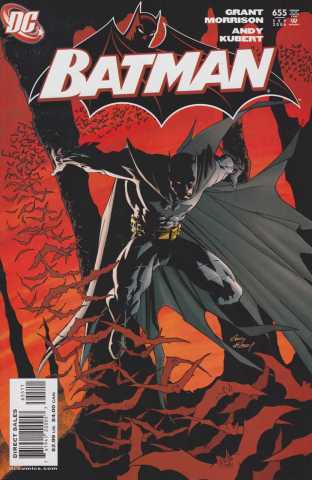
A new legacy is born, as Batman learns not only will he be forever a guilty son, but possibly not the greatest father either. (DC Comics)
AK: Oh, it was great [laughs]! Batman is a character who I’ve been drawing going on ten years. I am not sick of drawing Batman at all! I love drawing him so much. I love drawing Gotham, all that stuff. To me, it’s the ultimate. There are some characters who I’m built to draw. Gambit of the X-Men, I love drawing him. Wolverine, I love drawing Wolverine. Punisher was great too. And there are a lot of other DC characters who I found out I was really into. Superman – sometime, I’d love to take a good stab at Superman. I’ve only drawn him a couple of times, but I’d love to have a good shot at him. Dr. Fate was really cool. But Batman – you can’t get any better than Batman.
TMS: What is it about Batman especially? I mean, he’s my favorite character too, but why does he resonate so much with everybody?
AK: I don’t know [laughs]! I gotta tell you, what really got the itch for me was when I saw Jim Lee drawing Hush. I just saw the enthusiasm in what he was doing. That guy was having so much fun. And I was like, wow, I want to do that too! That’s what really started the process of me wanting to do Batman again. It’s all Jim’s fault [laughs]!
TMS: So, Jim leaves the X-Men, and you come onto X-Men, Jim draws Hush, and then you come onto Batman…
AK: Oh, no. I’m starting to see a pattern. I hope he doesn’t notice [both laugh]!
TMS: I think he’s pretty happy with where you’re at too! So why you don’t you now talk a little bit about how Dark Knight III came about?
AK: Sure! I guess it was about a year or so ago, when Dan DiDio had mentioned this project to me. He didn’t know what shape it might take, how many issues, the story or anything like that, he didn’t know how many artists would be involved, if any artists would be involved, etc. But he asked me if I would want to be involved. Usually, I have to think about things like that, when somebody offers me something, because you gotta be pretty careful. It’s something you’re going to be living with, so you want to make sure it’s something you’re going to be excited about. When Dan mentioned it to me, all I said to him was, “Dan, whatever it is, include me. Count me in. Whatever it is, whatever you want me to do, I’m there.” And that’s pretty much how it started.
TMS: When did you read the first Dark Knight?
AK: I was in Larry Hama’s office when it first came out. And you know from working up at DC, Marvel and DC traded comps, right? So Larry was looking through the DC comps and says, “Oh, the new Dark Knight.” And he flipped through it, and he said, “Hey, Andy, check this out.” I said, “Whoa, cool!” So I immediately went home and looked for my dad’s bundle.
TMS: What impact did it have on you when it first came out? I read it probably about ten years later, because obviously, it was not a kid’s book. Actually, my dad gave me his copy to read, which is kind of funny.
AK: Oh, that’s cool that your dad read it!
TMS: I have a proud nerd legacy [both laugh]. But what was the impact like right at that time when it was coming out for everybody?
AK: Well, I don’t know for everybody, but for me, it was such a different take on storytelling and how things were done narratively. It was so cinematic and so hard-hitting. Frank [Miller] hit all the points at the right time, you know what I mean? As far as the points he wanted you to feel, to be the most impactful, he hit. His layouts were very cinematic and were just as much as what should’ve been shown. It’s hard to explain, but he was able to nail each panel as to what you should see, and what you should be feeling.
TMS: The really essential information.
AK: The essential information, and he did it simply and effectively. There wasn’t a lot of extraneous stuff in there. Everything was BAM! Right to the point. The way he wrote the narrative was different than everything else that was being done as far as I know. The Daredevil stuff he was going was along those lines, but this was all new and fresh. Frank has probably reinvented himself three, four, ten times over the course of his career! And this was one of those times.
TMS: How does the process work exactly? How’s the collaboration?
AK: Brian [Azzarello] and Frank work together on the scripts. Brian writes them up, puts together all their notes and their ideas and everything, sends them to me, and I draw it up. I do my 11×17 layouts on the pages, scan them in, and I send them to everybody involved. I sent them to Frank, I send them to Brian, I send them to Mark Doyle, and I look for feedback on them. Once we’re all good, I go back and draw the things up.
TMS: And then Klaus [Janson] is inking it.
AK: Yep, and then I send them off to Klaus.
TMS: You guys are really capturing the spirit of the original art, wholeheartedly.
AK: Thanks. On my part, I can’t see it being done any other way. It’s gotta have that, I call it the “Dark Knighty” look. It has to go with
what Frank established. And I gotta tell you, the feedback I’m getting from Frank on this stuff – he’s calmed my nerves, and he’s really helped me out in terms of how I lay it out, and the composition, and all that kind of stuff. It’s really been working out well.
TMS: That’s wonderful! What’s a tip that he gave you that really changed your mind about something?
AK: One very simple tip was more negative space. It sounds simple and plain, but that helped me out so much. It gave more room for things to breathe. That helped me out sooooooo much! I was like, “Oh, I can see it.” That one little tip just really helped out.
TMS: I can totally see that piece of advice from him too, because he’s really so good at negative space.
AK: Exactly, yeah. And that was a big thing when I sent him the first five or six pages. I’m sitting back, and I’m looking at the pages, and I’ve worked my tail off. You gotta know, I really banged my head against the board on those pages. But I knew something was not there, and something was not right, and I didn’t know what it was. I’m staring at them, I go, “they’re working, storytelling-wise, but they’re not ‘Dark Knighty’ enough or something.” So when I sent them in, and I got the feedback from Frank, I redrew probably about three, maybe four pages. Because then I saw it. I could visualize it, and it worked out a lot better.
TMS: That’s the nice part about the collaborative nature of comics. Sometimes, people really can help you see something that you hadn’t quite put your finger on yet.
AK: Exactly. And that kind of feedback, that kind of constructive criticism, you can’t get any better. I was telling someone at DC this too, that I’ve been brought up on my father’s storytelling. He hammered it into my head. My father was one of the best storytellers to ever work in comics. I mean, he was phenomenal. So I’m very influenced by what he told me. And now I’m getting feedback by another guy who is also one of the best storytellers in comics. How lucky can I be? As an artist or a cartoonist, to be schooled by Joe Kubert and Frank Miller – it’s pretty unbelievable.
TMS: Yeah, I’d say that’s a good legacy! Me, I can’t draw. I’m sure my artists are really happy knowing that about me, that I can’t draw, and here I was, critiquing their work.
AK: You know, I don’t know if you really need to know how to draw. The kids I teach here, I tell them in their first class, I don’t care what style you draw in. I don’t even care if they’re drawing it perfect or anything, I would rather read a story that has good storytelling, and the art’s not up to par, rather than the art is all technically beautiful and perfect, but there’s no storytelling. I’ll look at the art, and that’s the end of it. I’ll look at a couple of pages, and then I’ll put it down. If the storytelling is there, it doesn’t matter what style, or if the hands aren’t perfectly drawn, or that kind of thing. I’ll read it.
TMS: Well, in that sense, maybe it is handy to have a non-artist looking at it, because if a non-artist can’t follow what’s going on, then you know that’s a problem.
AK: Yeah! Or if it’s work to figure out what’s going on. I have a very short attention span, you know. If I have to sit there and figure things out, it’s game over for me.
TMS: Any last thoughts?
AK: I will say that this Dark Knight project is one of the best times I’ve had in my career. Working with everybody involved, it’s so seamless and so stressless. Everyone’s a professional, we’re all on the same page, we all get along, it’s great! Not that it hasn’t happened on prior projects, but on this caliber of a project, it’s a pleasure. The only bad part about it for me is that it’s gonna end [laughs]. Let me tell you, Rachel, it’s kick-ass. It really is. And I’m not just talking about what I’m doing, I’m talking about the story. What these guys are doing, it’s kick-ass, and Klaus is doing a great job. This is the first time that Klaus and I have ever worked together too.
TMS: Is it?
AK: Yeah, and I’ve known Klaus for years, ever since I was at Marvel. But this is the first time we’ve ever worked together.
TMS: Well, then, I’m pretty sure it was worth waiting for, right?
AK: Yeah, this is perfect.
DKIII hits the shelves on 11/25. You dare not miss this historical collaboration!
(featured image via Luigi Novi/Wikimedia Commons)
—Please make note of The Mary Sue’s general comment policy.—
Do you follow The Mary Sue on Twitter, Facebook, Tumblr, Pinterest, & Google +?
Have a tip we should know? [email protected]
